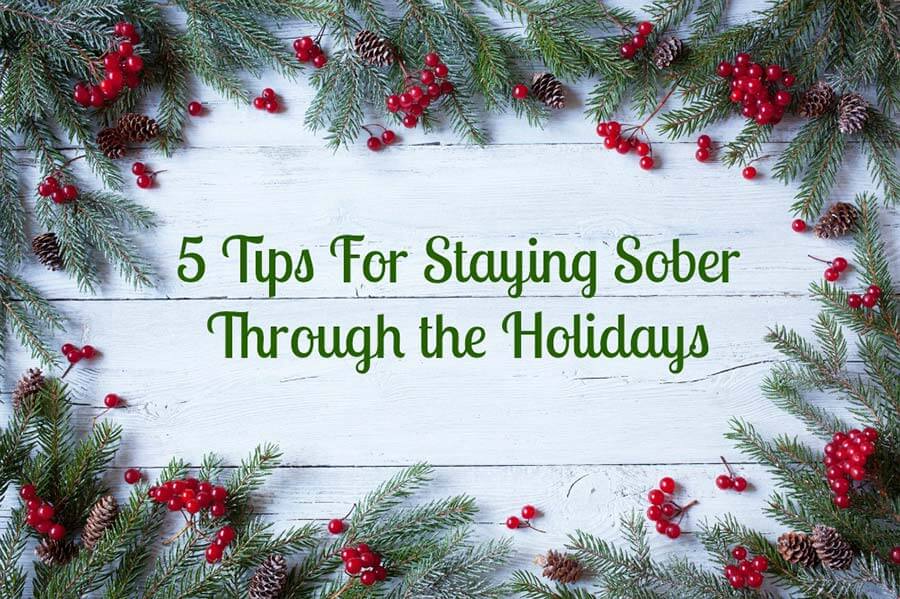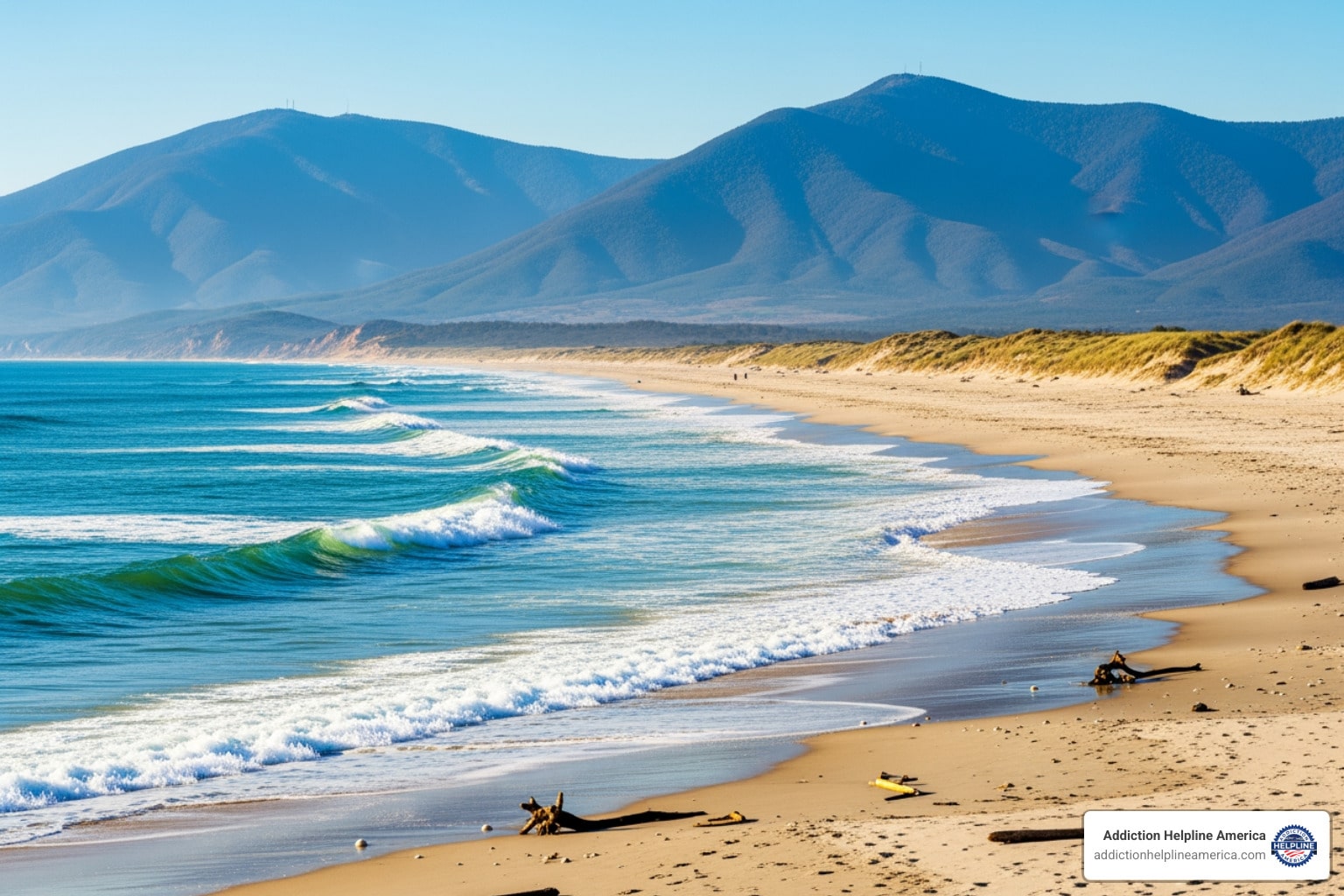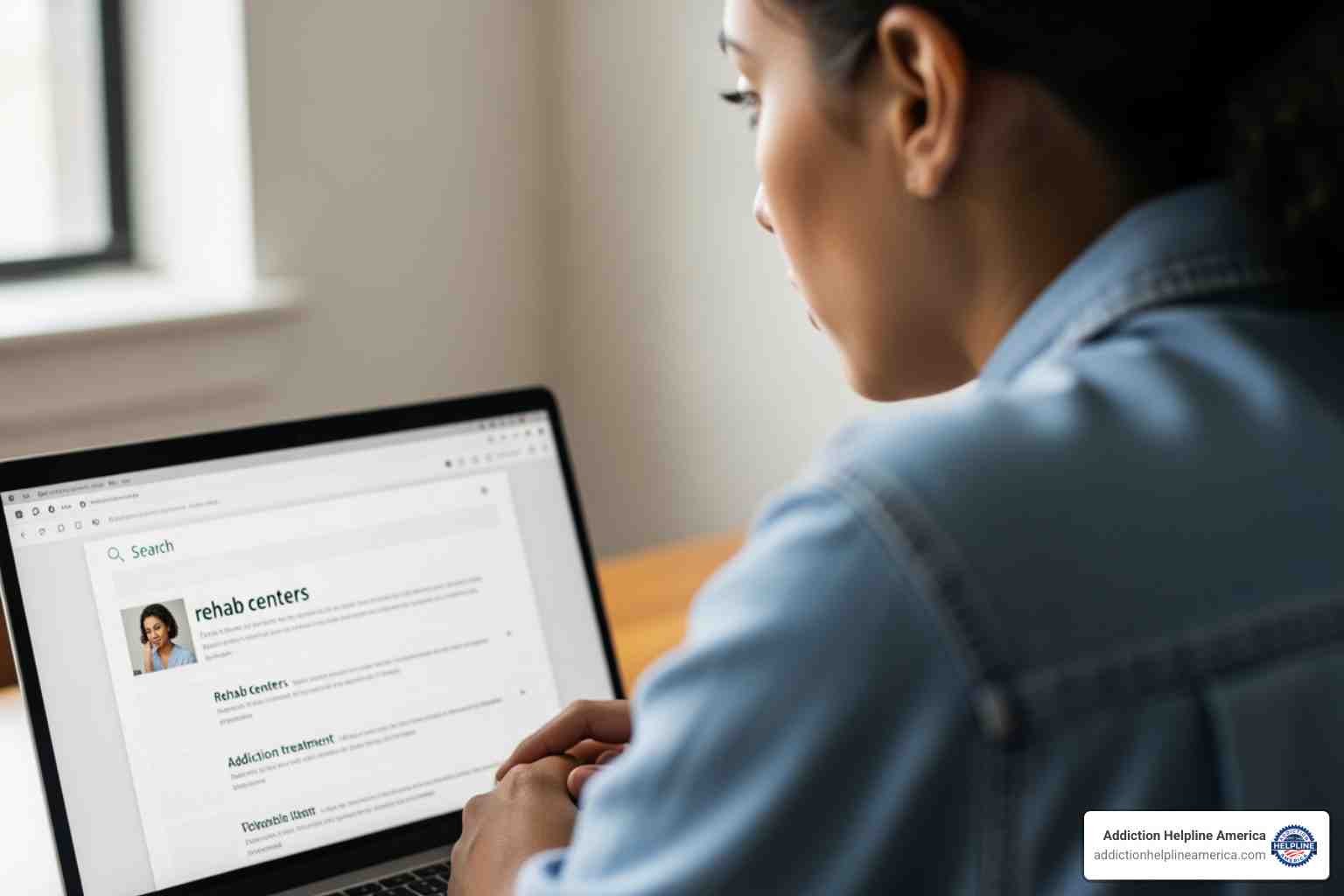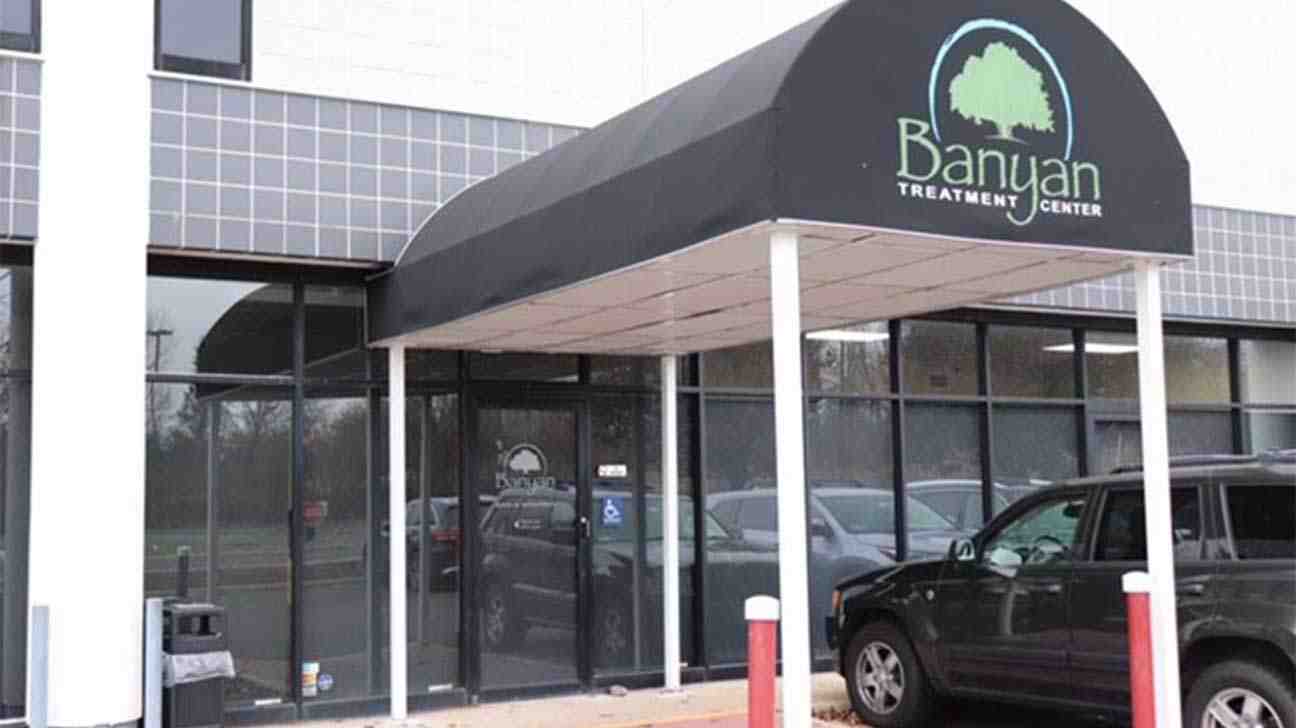
When you’re in the thick of it, a craving can feel like it will last forever. But the surprising truth is that a single, intense craving what I call a “craving wave”—is usually quite brief. It typically peaks and starts to fade within just 5 to 20 minutes.
The real fight isn’t with one urge. It’s with the recurring “tide” of these waves, a pattern that can stretch on for weeks, months, or even longer. Grasping this difference is the first real step toward taking back control.
The Real Lifespan of a Craving
So, when someone asks, “How long do cravings last?” they’re actually asking two separate questions. It’s incredibly helpful to break it down: there’s the short-term feeling of a single urge, and then there’s the long-term pattern you’ll navigate during recovery.
Think of it this way. An individual craving is just like an ocean wave. It gathers strength, swells to a powerful peak where it feels like it might just knock you over, and then, just as naturally, it breaks and pulls back. That whole cycle—the single wave—is what usually lasts only a handful of minutes. The tough part? More waves are always on the horizon.
The Craving Wave vs. The Craving Tide
The “tide” is a perfect metaphor for the overall period in your recovery when these waves are most frequent and intense. This longer phase is directly tied to how deeply the substance or behavior has etched itself into your brain’s reward pathways.
A single wave is just a fleeting neurological signal, but the tide is a powerful, conditioned response built up over months or years of reinforcement.
This distinction is a game-changer because it completely reframes the battle. Your job isn’t to stop a wave from forming—that’s next to impossible. The real goal is to learn how to stay balanced on your surfboard and ride it out until it passes, trusting that, with time, the entire tide will eventually recede.
“A craving is not a command. It is simply a strong suggestion from a part of your brain that has learned a powerful but outdated habit. Recognizing it as a suggestion, not an order, strips away much of its power.”
Typical Duration of a Single Craving Episode
While the long-term “tide” of recovery varies, the experience of a single “wave” is more predictable. Understanding how long you need to “ride it out” can make the experience feel much more manageable. Here’s a general look at how long a single, intense craving episode usually lasts before it starts to subside.
| Craving Type | Typical Peak Duration | Key Influencing Factors |
|---|---|---|
| Food & Sugar Cravings | 5-10 minutes | Blood sugar levels, emotional state, visual cues |
| Nicotine Cravings | 5-10 minutes | Time since last use, environmental triggers (like coffee) |
| Alcohol Cravings | 15-20 minutes | Social settings, stress, time of day |
| Drug Cravings (Stimulants, Opioids) | 15-30 minutes | Specific drug, intensity of last use, environmental cues |
Remember, these are just averages for a single, acute urge. The key is to have a plan to distract or soothe yourself for this short window of time until the intensity passes.
Understanding Your Personal Timeline
The length of the “craving tide” is deeply personal. It changes dramatically from one person to the next and depends heavily on the specific substance or behavior. For some, the most overwhelming urges calm down after just a few weeks. For others, especially those with a long history of substance use, psychological cravings can pop up unexpectedly, often triggered by stress or old environmental cues, for a much longer period.
Knowing what to expect can make the journey feel a lot less daunting. Here’s how to think about it:
- Your Short-Term Battle: Focus on successfully managing the 5 to 20 minute “waves” as they hit.
- Your Long-Term Strategy: Develop the right coping skills and support systems to wait for the “tide” to go out.
This perspective shifts your mindset from feeling weak or like you’re failing to feeling strategic. Experiencing a craving doesn’t mean you’ve done something wrong; it means you’re in a predictable and normal part of the healing process.
For those facing more severe challenges, getting professional support is a non-negotiable part of a winning strategy. Exploring options like specialized rehab centers for drug addiction can offer the structured environment and expert guidance you need to navigate the toughest parts of recovery.
Call Now – Your Journey to Recovery Begins Today!
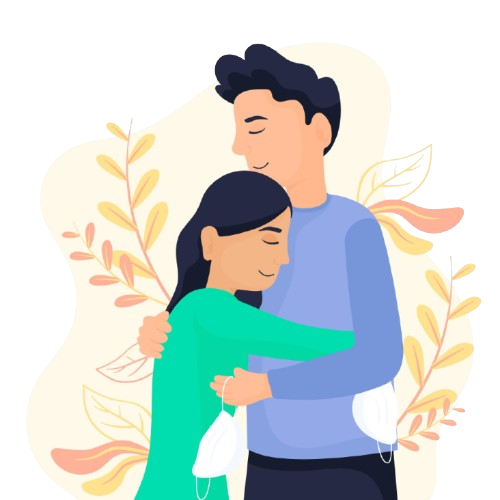
Take the first step towards a healthier life! Call now to connect with our compassionate team and start your recovery journey today. Your path to healing awaits!
Our recovery specialists are available 24/7 to provide support, and all calls are confidential and free. Reach out anytime – we’re here to help!
The Science Behind Why We Crave
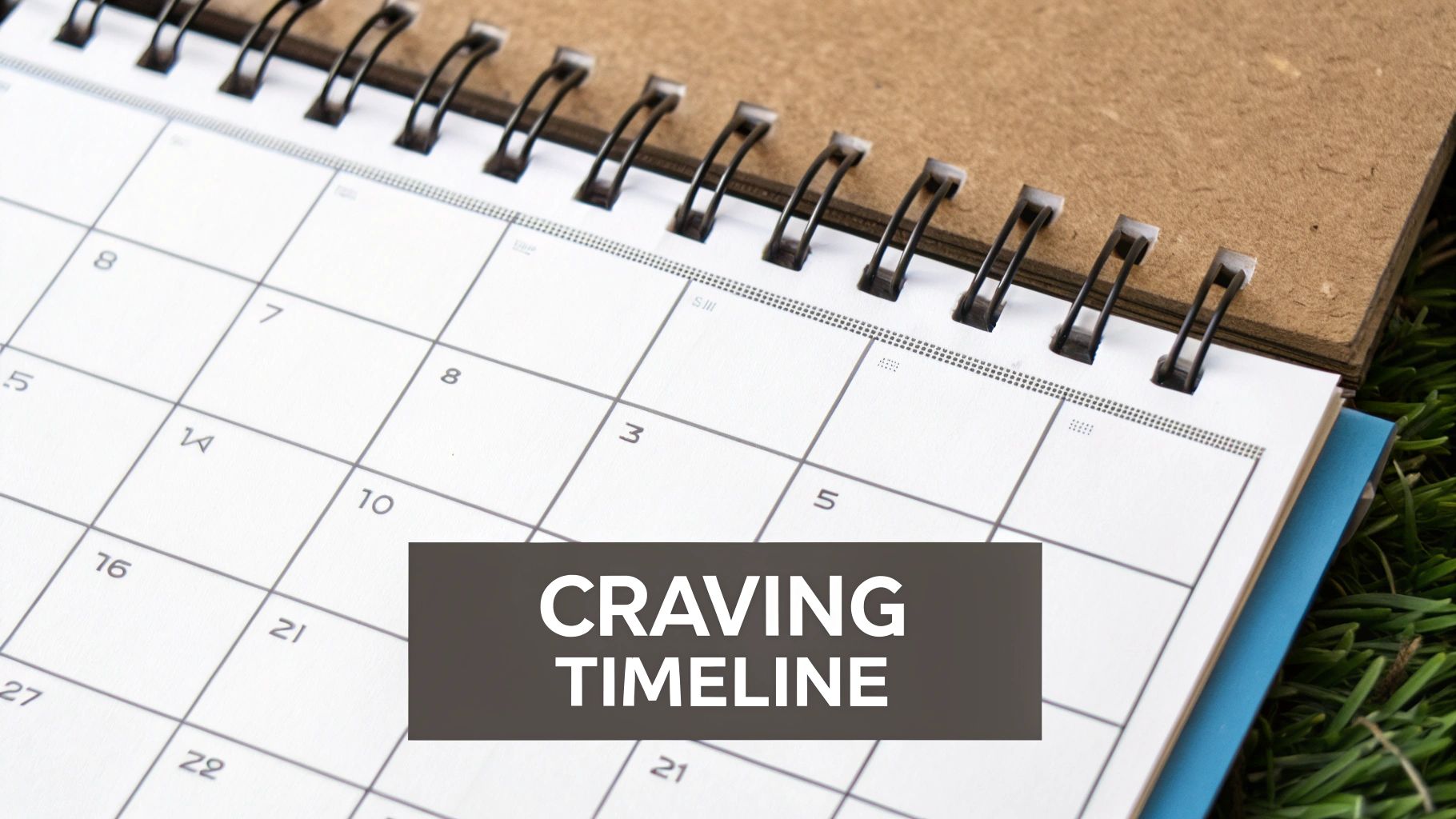
Before we can talk about how long cravings stick around, we need to get to the bottom of why they feel so powerful and automatic in the first place. Let’s be clear: cravings aren’t a sign of weak willpower or some personal failing. They’re a biological process, hardwired deep inside your brain.
At the heart of it all is your brain’s reward system. Think of this as a primitive network designed to keep you alive. When you do something essential for survival, like eating or connecting with others, your brain releases a chemical called dopamine that makes you feel good. It’s a simple, effective signal that says, “Hey, that was great. Let’s remember to do it again.”
The problem is, this system can be hijacked. Substances like alcohol, nicotine, or sugar—and even certain behaviors—unleash a flood of dopamine far more intense than any natural reward. This massive surge delivers a very loud and clear message to your brain: “This is extremely important. Prioritize this above everything else.”
Your Brain Is Like a Forest
Here’s a helpful way to picture what’s happening. Imagine your brain is a dense, wild forest. The first time you try a new, highly rewarding substance, it’s like hacking your way through thick bushes to create a faint trail. It takes effort and doesn’t feel natural.
But every time you give in to that craving, you walk that same path again. With each trip, the trail gets wider, clearer, and easier to follow. Before long, that little trail turns into a deeply rutted, eight-lane superhighway. This is your new neural pathway.
Once that highway is built, it becomes the path of least resistance. So when a trigger pops up, your brain isn’t going to bother bushwhacking a new trail. It’s going to jump right onto the familiar superhighway it knows so well. This is exactly why a craving can feel so instant and unstoppable.
“A craving is simply your brain demanding to travel down its favorite, most well-worn road. That feeling of intense urgency is just a powerful chemical system that’s been rewired to see that road as the most important destination.”
Understanding this biological fact is the first step to taking back control. It shows that you aren’t broken; your brain just learned a very efficient—but very unhealthy—habit. Your job now is to start blazing new, healthier trails.
The Role of Environmental and Emotional Triggers
These powerful neural pathways aren’t just connected to the substance itself. Your brain is an expert at linking that dopamine reward to everything else that was happening at the time—your emotions, your location, the people you were with, and your daily routines.
These associations become powerful triggers that can fire up a craving in an instant:
- Time of Day: That 3 p.m. energy dip that always has you reaching for a sugary coffee.
- Emotions: Feeling stressed after a long day and immediately thinking a drink is the only answer.
- Places and People: Driving past your old favorite bar or seeing friends you always used to smoke with.
- Sensory Cues: The smell of freshly brewed coffee, the clink of ice in a glass, or even the sound of a can popping open.
These triggers are everywhere, and they often work below the level of our conscious thought, which is why cravings can feel like they ambush you out of nowhere. Research confirms just how common this is. One study found that while food cravings happened during 40.7% of eating events, they also popped up in 14.3% of moments when people weren’t even eating, showing they are a normal part of life, even without physical hunger. You can explore more about these widespread craving patterns and their findings in the full study.
Your Craving Timeline for Different Habits
If you’re trying to break a habit, knowing what to expect is a game-changer. The journey away from cravings isn’t a one-size-fits-all experience; it’s different for everyone and for every substance. How long cravings last for sugar is wildly different from nicotine, alcohol, or even caffeine.
Understanding these timelines helps you set realistic goals. It takes the guesswork out of the equation, so you’re not left wondering if what you’re feeling is “normal.” Instead, you can feel confident and prepared to stick with it, even on the tough days.
Here’s a look at how a typical craving pattern often plays out during that first critical week.
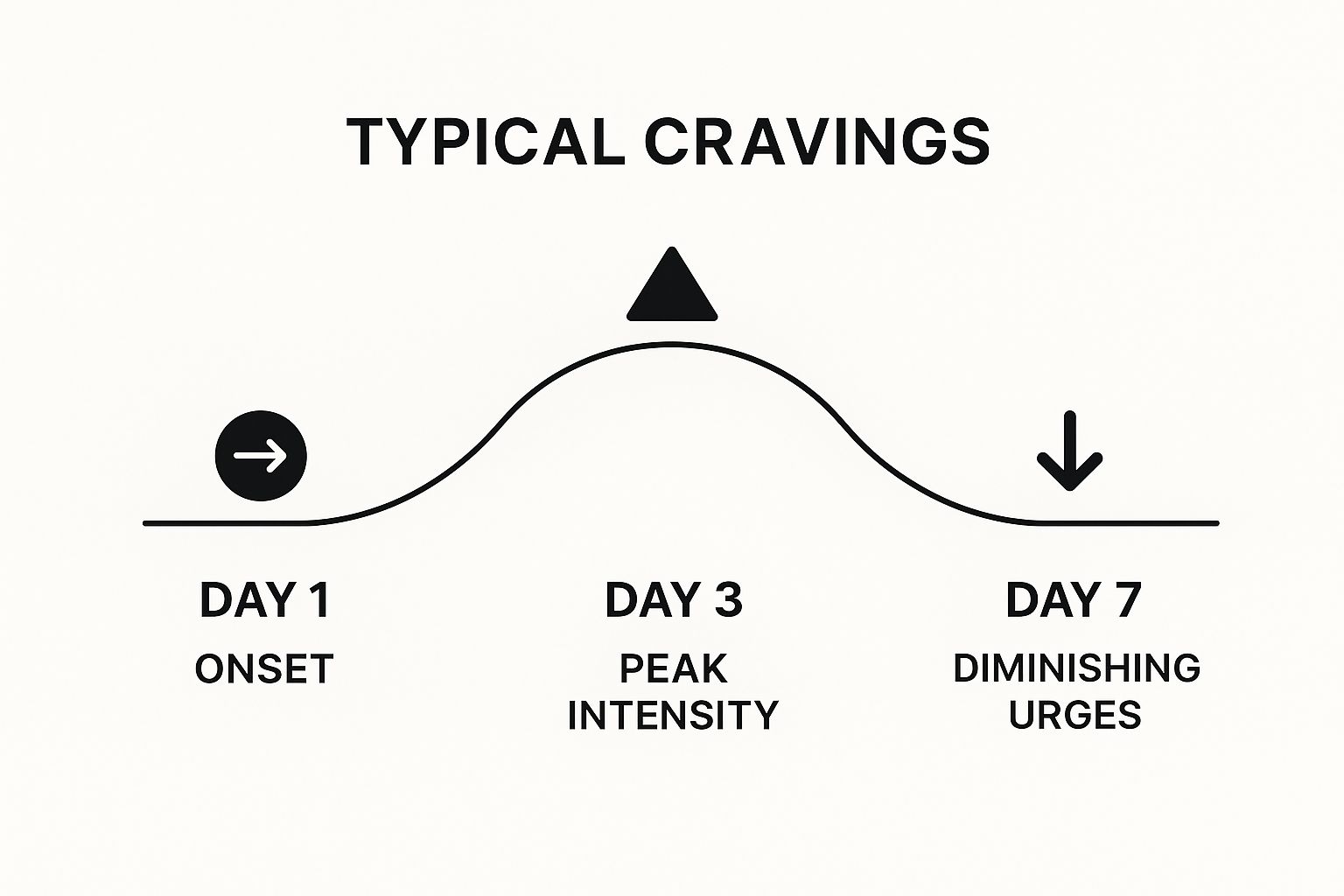
As you can see, many people find that the physical urges hit their peak around day three before they start to ease up. But remember, this is just a general guide—your own experience might look a little different.
To give you a clearer picture, let’s compare the typical craving patterns for some of the most common substances.
| Substance | Acute Craving Phase | Long-Term Psychological Cravings |
|---|---|---|
| Nicotine | Intense physical cravings peak within the first 72 hours and gradually decrease over the first week. | Psychological triggers (e.g., morning coffee) can persist for months, requiring new routines. |
| Alcohol | Physical withdrawal and intense cravings can last from a few days to 2-4 weeks, depending on dependency. | Post-Acute Withdrawal Syndrome (PAWS) can cause intermittent cravings for 6 months to 2 years. |
| Sugar | Strong physical urges and withdrawal symptoms (headaches, fatigue) peak within 3-7 days. | After the first week, cravings become more about habit and emotional triggers than physical need. |
| Caffeine | Physical symptoms like headaches peak within 1-2 days and cravings typically last about one week. | After 7-10 days, the primary challenge is breaking the daily ritual, not physical dependence. |
Each substance rewires our brains and bodies differently, so the path to breaking free will have its own unique timeline and challenges.
Nicotine Cravings
When you decide to quit smoking or using other nicotine products, the cravings come on fast and they hit hard. You can expect the physical withdrawal symptoms to peak within the first 72 hours. This is when your body is working overtime to clear the nicotine, and the physical urges will likely be at their most powerful.
After that first week, the purely physical side of the craving starts to fade quite a bit. The real long-term challenge is the psychological craving—the one that’s tied to your morning coffee, your drive home, or a stressful moment. Getting through this phase is all about consciously building new, healthier habits to replace those old triggers.
Alcohol Cravings
The timeline for alcohol cravings is deeply connected to a person’s level of dependence. For many, the acute withdrawal phase—where the most severe physical cravings live—lasts anywhere from 2 to 4 weeks. Once you’re through that initial period, the urges usually become less frequent and not nearly as intense.
“It’s crucial, though, to understand the difference between acute withdrawal and Post-Acute Withdrawal Syndrome (PAWS). PAWS can show up long after the physical withdrawal is over, causing mood swings and occasional cravings that can surface for months, sometimes up to two years, as your brain chemistry slowly rebalances itself.”
For those facing this difficult journey, a structured plan can make all the difference. Learning more about overcoming addiction in 30 days provides a solid framework for navigating this critical initial period with targeted support and strategies.
Sugar Cravings
You might be surprised to learn that kicking a sugar habit can feel a lot like quitting a more serious substance. The initial cravings can be incredibly intense, often peaking within the first 3 to 7 days. During this window, it’s common to deal with headaches, fatigue, and powerful urges for anything sweet as your body learns to regulate its blood sugar without the constant influx.
The good news? Most people find that after that first tough week, the overwhelming physical need for sugar starts to die down. If you can stick with it for a full month, you can often completely reset your palate, making those overly sweet foods you used to love seem far less appealing.
Caffeine Cravings
Ah, the dreaded caffeine withdrawal headache. It’s infamous for a reason. This telltale symptom usually peaks 1 to 2 days after your last cup of coffee or tea. Along with the headache, you can expect cravings, fatigue, and some irritability to last for about a week.
After 7 to 10 days, most of the physical dependence is gone. Any lingering “cravings” at that point are less about a physical need and more about the comfort of your daily ritual.
Call Now – Your Journey to Recovery Begins Today!

Take the first step towards a healthier life! Call now to connect with our compassionate team and start your recovery journey today. Your path to healing awaits!
Our recovery specialists are available 24/7 to provide support, and all calls are confidential and free. Reach out anytime – we’re here to help!
Factors That Shape Your Craving Intensity
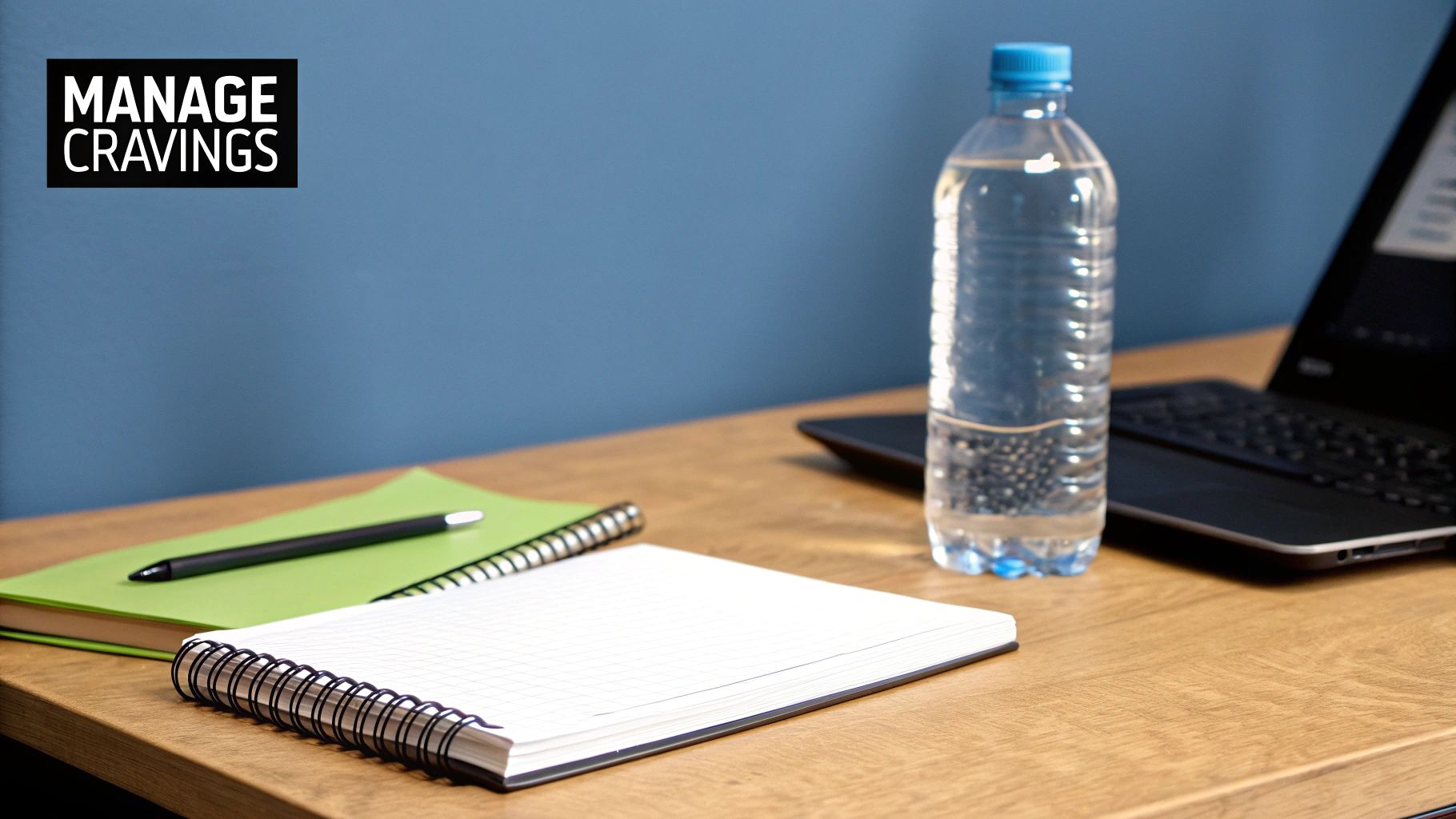
If you’re wondering, “how long do cravings last?” there’s no single answer. The experience is deeply personal. Your biology, your history with a substance, and your daily life all come together to either crank up the volume on cravings or dial it way down. It’s a lot like a storm—the specific conditions determine just how intense it gets.
One of the biggest pieces of the puzzle is how long and how heavily you used a substance. Someone who had a few cigarettes a day for a year is going to have a very different experience than a pack-a-day smoker of twenty years. The longer the brain’s reward system has been rewired, the deeper those pathways are, and the more powerful the cravings will feel when you stop.
Your Environment and Social Circles
Your surroundings play an outsized role. We call these external cues triggers, and they’re powerful because your brain has forged a rock-solid link between them and the substance. Just seeing, smelling, or even hearing something connected to your old habit can kick off a craving in an instant.
Some of the most common environmental triggers are:
- People: Hanging out with the same friends you always used to drink or use with is a classic setup for a craving.
- Places: Driving by the bar you used to frequent, walking down a familiar street, or even just sitting in that chair at home can bring on an urge.
- Objects: Sometimes, it’s as simple as seeing a coffee pot, an ashtray, or a wine bottle. Your brain remembers the connection and sends the signal.
Getting a handle on how your environment affects you is the first real step toward managing it. For a deeper dive, our guide on identifying your personal addiction triggers is a great place to start.
Stress and Emotional States
What’s happening inside you is just as important as what’s happening around you. Our emotions are incredibly powerful triggers, often because the habit itself became a way to deal with them in the first place. Stress is a major culprit. It floods your system with cortisol, a hormone that basically primes your brain to go hunting for a familiar reward.
A really useful tool for checking in with yourself is the acronym HALT:
- Hungry
- Angry
- Lonely
- Tired
If you’re feeling any of these, your defenses are naturally lower. Your brain is much more likely to start screaming for that quick, easy fix it remembers so well. This is precisely why self-care isn’t a luxury in recovery; it’s a core strategy. Eating well, sleeping enough, and finding healthy ways to manage stress are fundamental to keeping cravings from taking over.
Take food cravings, for example—a common experience tied directly to habit. Studies show that a staggering 80% to 85% of people have craving episodes multiple times a week. And interestingly, research reveals that cutting back on how often you eat a craved food is far more effective at weakening the craving than just eating a smaller portion. This really highlights how deeply our routines and emotional states can condition our desires.
Actionable Strategies to Conquer Cravings
Knowing the theory behind cravings is a good start, but real power comes from having a plan for the moment an urge actually hits. This is where we move from understanding to doing. Let’s build your personal toolkit for managing cravings and putting you firmly back in control.
It helps to think of a craving less like a command and more like a big wave. You can’t stop the wave, but you can learn how to surf it. This is the whole idea behind urge surfing, a powerful mindfulness technique. Instead of fighting the craving, you observe it. You notice the physical sensations, watch the intensity build, see it peak, and then feel it fade away on its own—all without acting on it. Practicing this reminds you that the urge is just a feeling, and like all feelings, it will pass.
Distract, Delay, and Replace
Sometimes, a craving feels too strong to just sit with. When that happens, you need to get more hands-on. The goal is to break the automatic cycle that goes from trigger to use.
Here are three simple but effective tactics to use in the heat of the moment:
- Distraction: The trick here is to break your mental focus. Get busy with something that demands your full attention. Call a supportive friend, dive into a puzzle, take a quick, brisk walk around the block, or put on a podcast that really makes you think. The idea is to keep your mind occupied for the 5-20 minutes it usually takes for that craving wave to crest and fall.
- Delaying: This one is deceptively simple. Just tell yourself, “Okay, I can have that, but not right now. I’m going to wait 30 minutes.” This simple act puts you back in the driver’s seat. More often than not, by the time those 30 minutes are up, the urge has lost its punch.
- Replacement: Find a healthier activity or item to satisfy the underlying need. If you’re craving a sugary drink, try some fizzy sparkling water with a squeeze of lemon. If it’s a salty, crunchy snack you’re after, grab a handful of almonds or some carrots instead of potato chips. This isn’t just about getting through the moment; it’s about actively building new, healthier habits.
The truth is, cravings don’t follow a neat schedule. Recent smartphone-based research shows that craving intensity can bounce all over the place during the day. While many urges are mild and fleeting, others can become intensely powerful. This data, which you can read about in this study on the temporal dynamics of craving intensity, underscores why having a variety of coping skills is so critical.
“A craving is a temporary storm. Your job is not to stop the rain, but to find a sturdy umbrella and wait for the sun to return. Having a plan is your umbrella.”
Weaving these strategies into your daily routine is a cornerstone of a strong recovery. For a more comprehensive look at the bigger picture, our guide on how to stop addiction explores the broader steps you can take to create lasting change.
By arming yourself with these coping mechanisms, you’re doing more than just surviving cravings—you are systematically taking away their power over your life.
Your Top Questions About Cravings, Answered
When you’re dealing with cravings, a lot of questions pop up. It makes sense—the uncertainty can feel just as overwhelming as the craving itself. Getting straight answers helps you understand what you’re going through, set realistic expectations, and feel more confident in your recovery.
Let’s clear up some of the most common questions people have when they’re on this journey.
Will My Cravings Ever Go Away for Good?
This is probably the number one question on everyone’s mind. The short answer is yes, for most people, the really intense, all-consuming cravings do fade with time. They become much less frequent and way more manageable, eventually feeling more like a whisper than a scream.
However, especially with deeply ingrained addictions to substances like alcohol or nicotine, psychological cravings can pop up years down the road. These are usually set off by something specific, like intense stress, a wave of nostalgia, or bumping into an old, powerful trigger.
The real goal isn’t to erase every last trace of a craving, which can be a frustrating and unrealistic standard. The focus is to get to a place where cravings don’t run your life or dictate your choices. Think of it like this: the craving was a superhighway in your brain, but with recovery, it becomes a dusty, overgrown path you rarely notice. Meanwhile, your new, healthy habits have built a brand-new, six-lane expressway that has become your default route.
Should I Fight a Craving or Is It Okay to Give In a Little?
This is a tricky one, and the right answer really depends on what you’re trying to achieve and the specific substance you’re dealing with. There’s no single rule that works for everyone. You have to be honest with yourself about the habit you want to break.
Here’s a practical way to break it down:
- For Substance Abstinence: If you’re quitting something like alcohol or nicotine, the goal is typically complete abstinence. In this case, giving in “just a little” is playing with fire. It can easily wake up the entire addictive cycle and set you back to square one. For these situations, resisting the craving is the safest bet.
- For Food or Behavioral Habits: If you’re managing food cravings as part of a healthy diet, a planned and mindful indulgence can actually be a smart, sustainable strategy. It helps you avoid feeling deprived, which is often what leads to out-of-control bingeing later on.
‘The real game-changer is learning the difference between a conscious choice and an impulsive reaction. A conscious choice keeps you in the driver’s seat. An impulsive reaction hands the keys right back to the craving.”
This is exactly why so many successful recovery programs advocate for total abstinence. For example, methods based on the 12-step tradition of AA are built on the understanding that for certain addictions, moderation simply isn’t a realistic or safe option.
Call Now – Your Journey to Recovery Begins Today!

Take the first step towards a healthier life! Call now to connect with our compassionate team and start your recovery journey today. Your path to healing awaits!
Our recovery specialists are available 24/7 to provide support, and all calls are confidential and free. Reach out anytime – we’re here to help!
How Can I Tell if It’s a Craving or Just Hunger?
Learning to tell the difference between a true physical need and a psychological urge is a crucial skill, especially when food is involved. They might feel similar at first glance, but if you listen closely to your body, the signs are pretty distinct.
Hunger is your body’s general request for fuel. It usually builds up slowly, you might hear your stomach rumbling, and it’s generally satisfied with any decent meal. It’s a physical signal.
A craving, on the other hand, is a very specific, mental demand for a particular taste or feeling. It tends to hit you suddenly, feels intense and urgent, and can show up even when you’re physically full. Think of hunger as your body saying, “I need energy,” while a craving is your brain yelling, “I want that specific thing right now!”
Navigating addiction is a difficult journey, but you don’t have to do it alone. If you or a loved one needs support, Addiction Helpline America offers a confidential, 24/7 service to help you find the resources and treatment you need. Call us to take the first step toward a healthier life at https://addictionhelplineamerica.com.
Our helpline is 100%
free & confidential
If you or someone you care about is struggling with drug or alcohol addiction, we can help you explore your recovery options. Don’t face this challenge alone—seek support from us.
Programs
Resources
Will my insurance
cover addiction
treatment?
We're ready to help
Find the best
drug or alcohol treatment
center
Are you or a loved one struggling with addiction? Call today to speak to a treatment expert.






